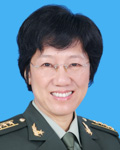|

One of the fruits to have emerged from the first summit between Chinese President Xi Jinping and U.S. President Barack Obama is the official acceptance of the U.S. invitation to the People's Liberation Army (PLA) Navy to participate in the 2014 Rim-Pac exercise. It will provide the Chinese and American navies with a rare opportunity to cooperate in a multilateral setting. However, past experience warns against high expectations. The Chinese military has been invited to some U.S.-sponsored multilateral exercises in the past, but was categorized as a non-ally and given observer status or allowed only limited participation. The Rim-Pac exercise consists of a wide range of scenarios, typically lasting more than two months. The PLA Navy expects its participation to be more substantial than a merely symbolic appearance. It is hoped that China's participation in the largest regional maritime exercise could be a model for positive and constructive engagement between the two militaries and a real effort to share common interests and responsibilities.
Compared to relations in economic, political, social and cultural aspects, the China-America military relationship has lagged behind for more than two decades. It has been plagued by deep-rooted distrust, which to some degree, reflects the hard reality of conflicting strategic interests.
From the Chinese perspective, the U.S. policy of rebalancing toward the Asia-Pacific region can be naturally interpreted as efforts to prevent the rise of China. The military part of the "rebalance" includes deployment of up to 60 percent of naval and air assets to the region, the redeployment of forces withdrawn from Iraq and Afghanistan to the region, the strengthening of military allies and the closer ties with regional partners, and the joint development and deployment of ballistic missile defenses in East Asia. All these have been interpreted as measures taken against a modernizing Chinese military. Some operational concepts such as the "AirSea Battle" developed by the U.S. Navy and Air Force are tailored for operational scenarios against China. It is inevitable for the PLA to draw the conclusion that the United States is preparing for military operations against it.
In addition, there are some enduring issues, such as U.S. arms sales to Taiwan, the arms embargo imposed on China since 1989, the frequent maritime/air surveillance and reconnaissance activities against China and a set of discriminating laws concerning military-military exchanges. One seemingly minor issue which carries strategic impact is the release of an annual report on China's military and security developments. China is one of four countries that the U.S. Congress has requested the Department of Defense to conduct annual assessments of their military power. This serves to reinforce the belief that China is defined somewhat as an enemy.
U.S. involvement in China's territorial disputes with neighbors in the South China Sea and the East China Sea is another obstacle to a healthy military-military relationship. Former U.S. Secretary of State Hillary Clinton asserted in July 2010 that freedom of navigation, a U.S. national interest, was threatened in the South China Sea, and voiced her support for multilateral approaches to solving the disputes, which contradicts China's long held position to solve territorial disputes bilaterally. And the U.S. Government has repeated its defense obligation to protect the so-called Japanese administration over an island chain in the East China Sea, although its official stand is not to take a position on its sovereignty.
Now that both leaders have agreed to positively construct better military ties compatible with the new model, it is high time for the two militaries to find ways to turn their national leaders' consensus into concrete actions.
Given the trust deficit between the two militaries, it will take a great amount of patience and political will to build trust and provide mutual strategic assurance. A shared belief that "cooperation is better than confrontation" could motivate efforts to better understand each other, to positively engage each other, and to earnestly accommodate each other's interests and responsibilities through high-level visits, institutionalized dialogues and informal discussions between defense leaders and strategic planners.
Furthermore, a clear-headed realization that the two militaries share a huge stake in controlling differences, avoiding crises and managing risks would help to stimulate joint efforts to prevent mistakes from happening. Both militaries can work together to set up rules of the road for ships and airplanes while operating in close proximity in and above international waters, establish a mechanism of communication to reduce the risk of miscalculation, and discuss ways to deescalate a crisis if one does occur. However, to move the military-military relationship in a more positive direction, the two sides need to do more. High-level visits are most important in trust building and tone setting, and can be enhanced by informal meetings between senior defense leaders to discuss strategic issues in an extensive and in-depth way. Institutionalized talks are crucial mechanisms to address each other's concerns and share deliverable results. They must be fleshed out with specialized working groups, greater coverage of topics and more frequent meetings. Functional exchanges make up the substance of a robust relationship. They should be expanded to cover not only military medical teams, army bands and ship port calls, but also training, logistics and joint exercises.
The Chinese PLA would seek cooperation with its American counterparts in building a new model of military-military relations, for it is the best and only way to serve the grandest national interests of both countries, to contribute to regional stability and prosperity, and to benefit global peace.
The author is major general of the PLA and director of Center on China-America Defense Relations, Academy of Military Science
Email us at: yanwei@bjreview.com | 